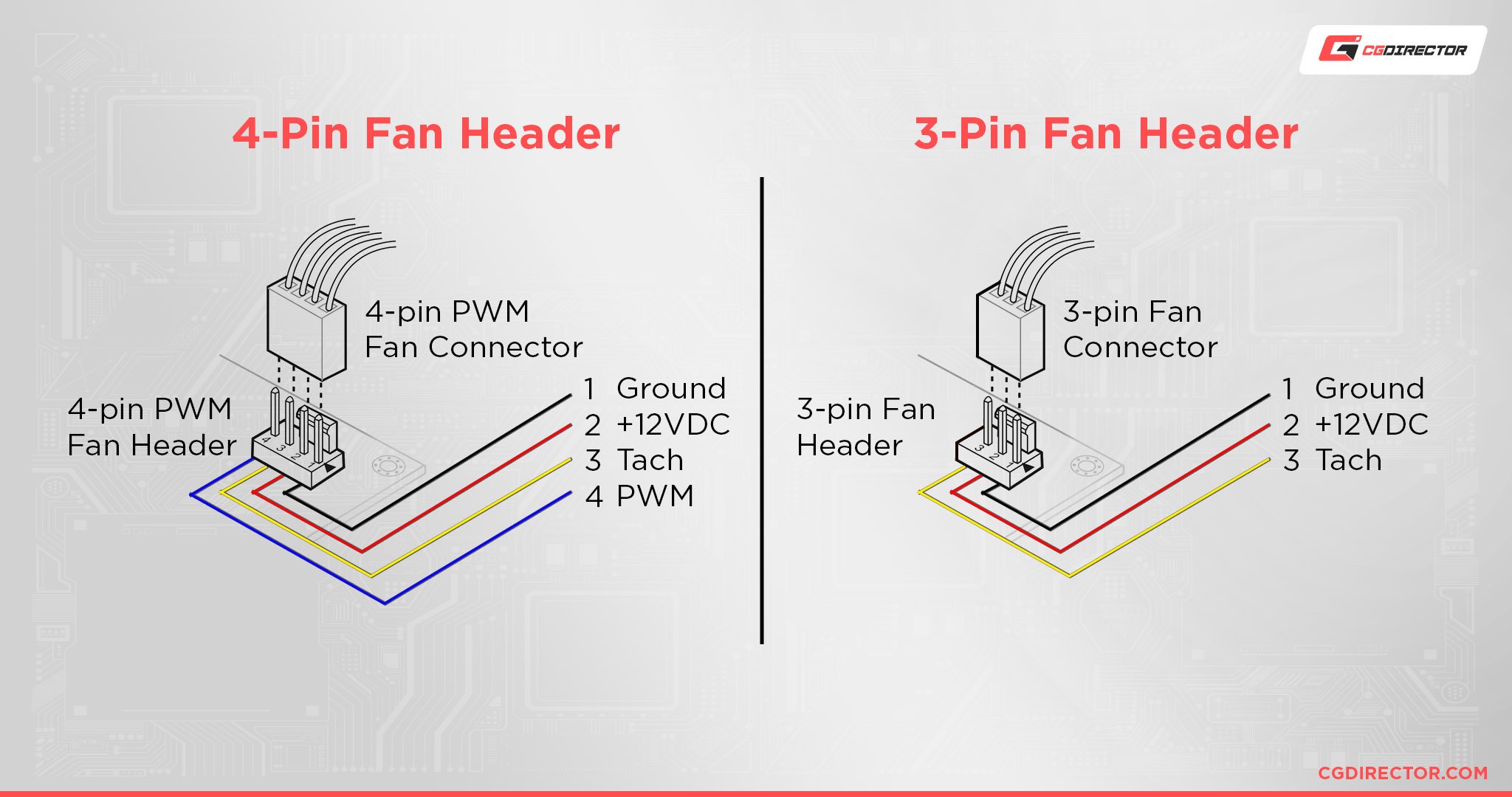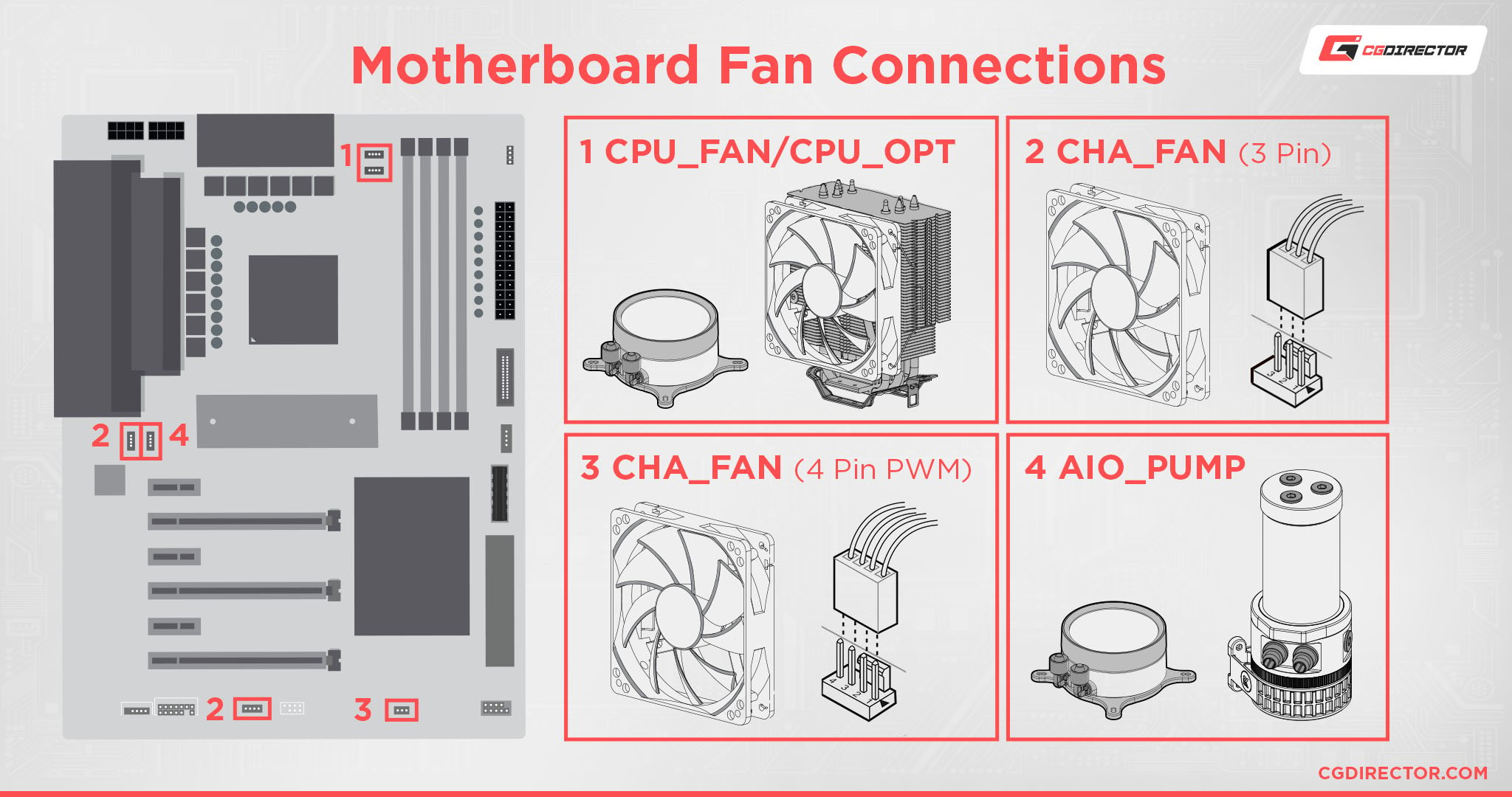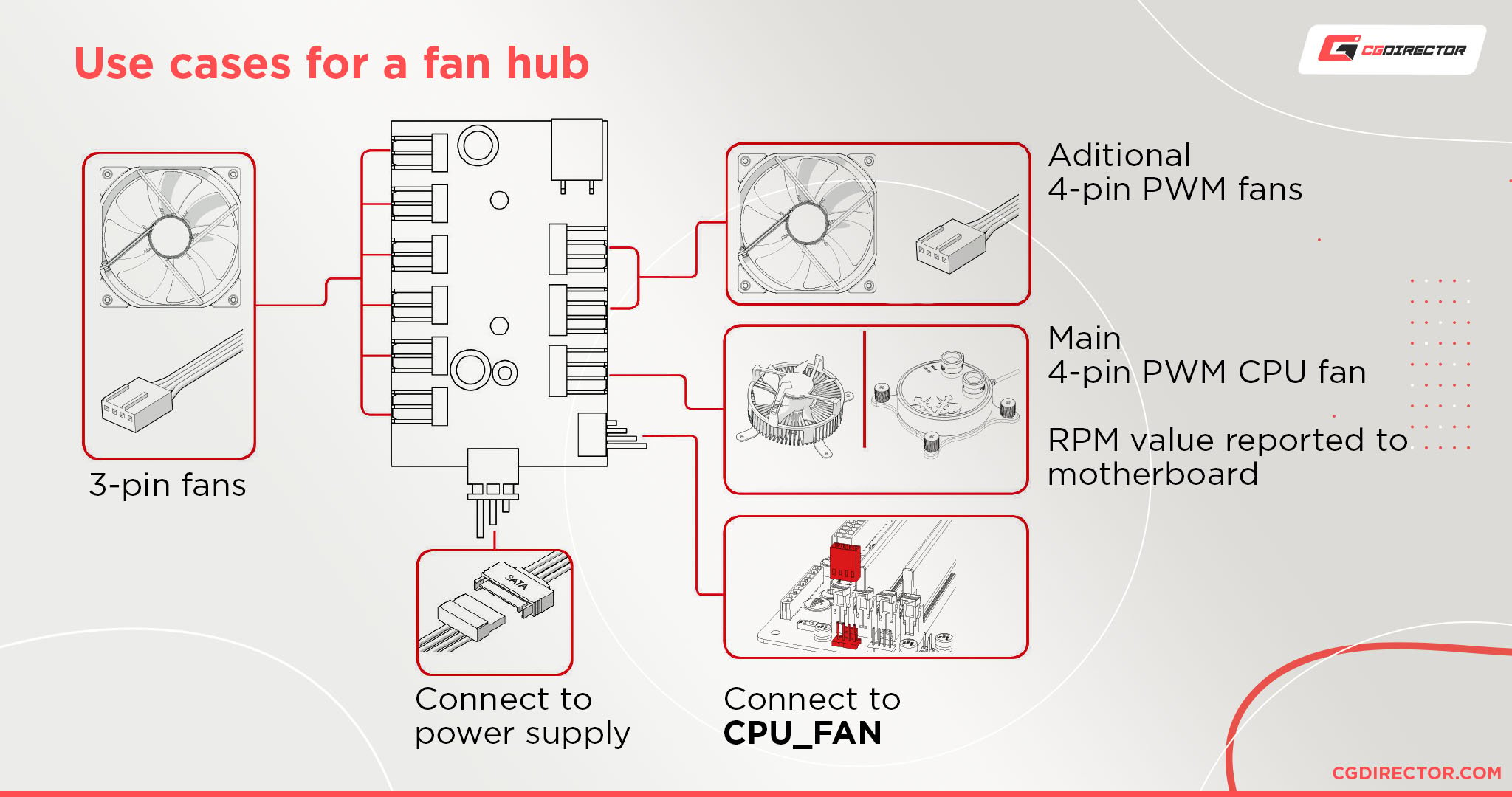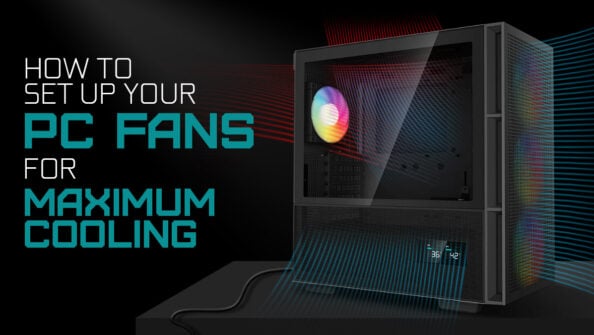Asking yourself “Where do PWM cables go?” Stick around and I’ll tell you all you need to know about PWM cables, including what they look like and where to install them on your motherboard. Let’s not waste any time, and dive right in!
TABLE OF CONTENTS
A Brief on PWM vs Non-PWM Cables
So, a PWM header is one of two fan header types on your motherboard. It’s denoted by a 4-Pin design, depicted below.

I want to take a moment to further distinguish 4-Pin PWM fan headers from 3-Pin non-PWM headers.
Specifically, PWM stands for Pulse Width Modulation, and this is a function required to control fan speeds. Thus, PWM headers are used for both CPU cooling fan headers and (usually) some or all of your case fan headers.
Non-PWM case fans can still be useful, but are generally louder since they run at full throttle at all times. PWM case fans are better whenever possible for case cooling with more balanced noise levels.
Now, let’s talk about where they go!
Where do PWM Cables Go? Beginner’s Guide
So, there are actually two main options for plugging in your PWM header.
You’ll either be using an existing PWM header on your motherboard (reserving the CPU_FAN header for your CPU cooler fan, of course) or using a fan controller connected to one of those headers.
I’ll discuss both options below.
Option 1: PWM Header on Your Motherboard

Most likely, you just need to plug your PWM fan into an existing PWM header on your motherboard. It will be labeled “CHA_FAN”, “PWM_FAN”, “SYS_FAN”, or something similar.
If you aren’t certain where exactly your motherboard’s PWM headers are located, consult your motherboard’s manual to find the specific location on your motherboard.
All of your FAN headers, be they PWM (4-Pin) or DC (3-Pin), on modern motherboards, can be controlled through your BIOS or Fan control software. PWM fans are more easily and precicely controlled than DC fans, though.
Option 2: PWM Fan Controller

If you have limited PWM headers or your PC/case simply comes with a fan controller pre-installed, you may want to plug your PWM fan into the ports of a fan hub.
Be sure that the fan hub in question is properly powered and connected to your motherboard as well.
If you don’t have a fan controller but discover as a result of reading this article that you might need one, consider the ARCTIC Case Fan Hub for a cheap, reliable option.
Over to You
And that’s all, for now!
This was a relatively straightforward guide, so I hope it helped you sort out where to plug in the PWM cables for your CPU or case cooling fan.
If you have any other questions about PC building or cooling, feel free to fire off in the comments below! Me or another member of the CGD Team will be happy to help.
Alternatively, you can hit the line of both the Team and our larger Community of Experts and Enthusiasts over on the Forum. If you’re looking to share projects or engage in longer-form discussions, that might be the better option for you.
Until then or until next time, though, have a good one! And happy building, if you came here during the initial build process of your PC. If you need help with other components, consider Jerry’s full PC Building Guide if needed.
![Where Do You Connect PC Fan PWM Cables To? [Beginner’s Guide] Where Do You Connect PC Fan PWM Cables To? [Beginner’s Guide]](https://www.cgdirector.com/wp-content/uploads/media/2023/12/Where-Do-PWM-Cables-Go-Beginners-Guide-Twitter-1-1200x675.jpg)
![How To Connect Front Panel Cables To Your Motherboard [Guide] How To Connect Front Panel Cables To Your Motherboard [Guide]](https://www.cgdirector.com/wp-content/uploads/media/2024/01/How-To-Connect-Front-Panel-Cables-To-Your-Motherboard-Twitter-copy-1-594x335.jpg)
![How And Where To Plug In All Your Fans On The Motherboard [Updated Guide] How And Where To Plug In All Your Fans On The Motherboard [Updated Guide]](https://www.cgdirector.com/wp-content/uploads/media/2022/05/How-to-and-Where-to-ConnectPlug-in-All-Your-Fans-to-the-Motherboard-Twitter-594x335.jpg)



1 comment
6 February, 2025
Hallo, ik wil een extra ventillator plaatsen in mijn pc,ik heb echter niet genoeg PMW connectoren nochtans moet (een molex 2510-4 pin adapter)(de kabel met de plug) met de 4 -pin gaatjes de fiche kunnen verbinden.Kan je mij vertellen hoe dat ik de ventillator juist moet installeren?Dank bij voorbaat.